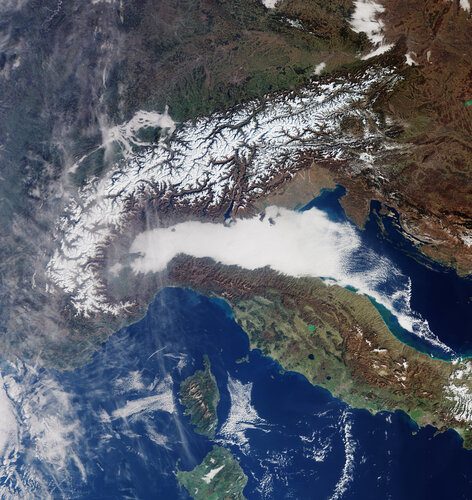
During these periods, fine and coarse particulate matter (PM2.5 and PM10) concentrations tend to spike, leading to health concerns. In contrast, summer months may witness elevated ozone levels, stemming from increased solar radiation and the presence of precursors (nitrogen oxides and volatile organic compounds) emitted from various sources.
The fluctuations in air pollution levels in the Po Valley, and around the world, have significant repercussions for human health and the environment.
Air pollution in the form of particulate matter (PM) plays a pivotal role in air quality. PM10 refers to particles suspended in ambient air with an average diameter of 10 μm or less and comprises dust, pollen and combustion byproducts. PM10 also includes the fine particle fraction (PM2.5), consisting of a mixture of elemental carbon, organic compounds, metals, nitrates, and sulphates, with particles smaller than 2.5 μm.
PM10 is inhalable and can impact respiratory health; PM2.5 poses health risks by entering the bloodstream through the lungs, causing cardiovascular diseases, respiratory diseases and allergies. Accumulation of both PM2.5 and PM10 therefore constitute serious concerns for human health.
According to EU directives and legal standards, concentrations of PM10 exceeding 50 μg/m3 are deemed dangerous, and this threshold should not be surpassed for any location for a specified number of days annually, typically set at 35 days.
However, recent observations indicate that in January 2024, there have been multiple instances where this critical threshold was exceeded.
Despite the prevalent air pollution in the Po Valley, levels of air pollutants above EU standards are consistently observed across Europe with the region regularly surpassing its annual average concentrations of fine particulate matter, as reported by the European Environmental Agency (EEA). This raises notable concerns for environmental health.



